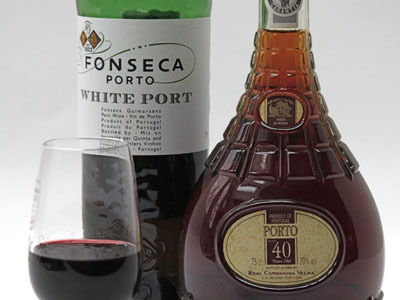It started out as a simple utilitarian product. The Brits added brandy to rustic Portuguese wine to stop the fermentation and to fortify it for the long sea voyage. It was during the 17th century when they were looking for a new source of wine while at war with France, and they could no longer buy their beloved Bordeaux wines. They turned to Portugal and called the new wine Port.
It worked beautifully; a very thick, dark rustic wine, not yet tamed, blended with high alcohol and sent on a long journey. As the wine matured it began to mellow, the depth of character began to develop and the high alcohol was balanced with the perfect body. The result was more than the Brits could imagine; it was magnificent.
Port today is still made in the very same way it was in the 17th century, albeit with a bit more intention. Before all the natural grape sugars have been completely fermented into alcohol, high-proof brandy is added to the tanks to stop fermentation. This results in a fortified wine that has incredible depth and intense fruit flavour.
Purely Portuguese, port must come from a specific region by law. It's made from a variety of hardy grapes that produce intense aromas. The vines are planted along the slopes and steep terraces of the Douro River Valley in Portugal where the predominantly schistous, rocky and acidic soil produce gutsy heavy wines. It's deep and rich and fortified to approximately 20 per cent alcohol, yet it's low in acidity and tannin so it tastes smooth despite the high alcohol. Its lush silkiness caresses your tongue and luxuriates down your throat with velvety richness. This is the magnificence of port.
All ports, apart from vintage, are matured in wooden casks in the port lodges. Once bottled, they are ready for drinking and do not require decanting. The tawnies are lighter in taste and colour than ruby, but they are all blended from several wines.
There are nine different ports that include Ruby Port, White Port, Colheita Port, Single Quinta Ports and Crusted Ports, but the most popular are Tawny Port with or without an indication of age, vintage port and late bottled vintage. Tawny ports are less sweet and are lighter than ruby or vintage ports. Even though tawny ports are labeled with an indication of their age with 10, 20, 30 years old, this is an average age because they are actually blends of different vintages. Tawny ports turn a lovely pale amber from extended aging in wooden casks which also turns their fresh fruit aromas into a smooth, soft character with nutty, toffee, caramel flavours. Tawny ports go extremely well with chocolate, dried fruits and older cheeses.
Vintage ports are considered the superstar of all ports. In exceptionally good vintage years (declared by the port wine council) the best grapes are segregated and used to make single-vintage port. Vintage ports account for just 5 per cent of production. Some of the best vintage ports are '70, '73 and '85. A '70 Fonseca Vintage Port could easily run you around $500 while an older vintage like a '63 could cost upwards of $2,500, if you can find one.
If you find a vintage port from the '90s they are considered too young to drink, but it's good to buy one and age it yourself. A Taylor Fladgate Vintage Port is easier to handle at around $150. To reach their peak, vintage ports often require an additional 10 years of bottle aging to gain body complexity and a velvety texture, but the great vintage ports age for decades. Always decant a vintage port.
LBV or Late Bottled Vintage means the wine is from a single vintage, from a good year but not necessarily one that earned a vintage designation such as the Vintage Ports. LBVs are bottled after four to six years of oak aging and if the label says “traditional,” like the Fonseca '05 LBV does, it means the wine is unfiltered and requires decanting before drinking as there might be some sediment at the bottom of the bottle.
Other wine regions around the world make port-style wines but only those from Portugal may be called port. Store port at fairly constant temperatures of 55 to 60°F on their side to prevent the cork from drying out. The rich, full-bodied styles of port are usually drunk after a meal. It's the white and lighter tawny ports that are highly appreciated as an aperitif before a meal.
Ports are becoming more of a sipping alternative to wine and cocktails, even though they're traditionally served as an after dinner drink that goes well with strong cheeses like Parmigiano, Stilton and old cheddar and nuts such as hazelnuts, pecans and walnuts. Of course modern day food and wine pairings favour caramel, chocolate and baked apples. Any dessert including these elements makes for amazing port and food experiences.
There is an old port superstition that says one must pass the decanter of port around the dinner table clockwise so each person can pour themselves a glass. This symbolizes the passing of time and avoids angering the devil, who lurks over your left shoulder. I'm not sure where this came from, I've always believed to bring out the best in a port, pour it into a five-ounce stemmed glass with sides that slop inward, fill it half way and enjoy.
““ Lynn Ogryzlo is a food and wine writer
and international award-winning author of
Niagara Cooks. You can reach Lynn for questions
or comments at www.niagaracooks.ca.
